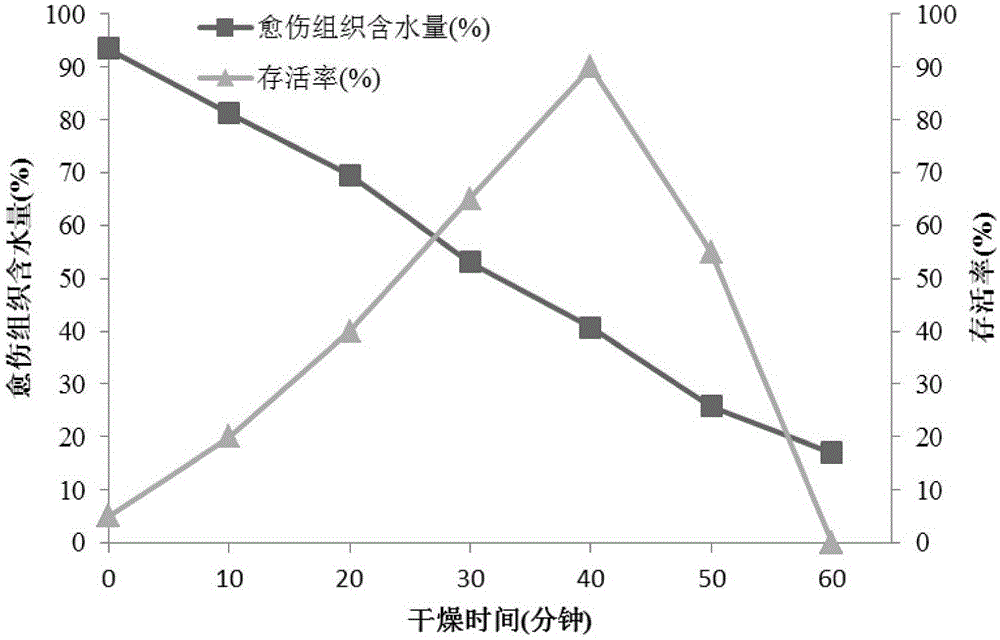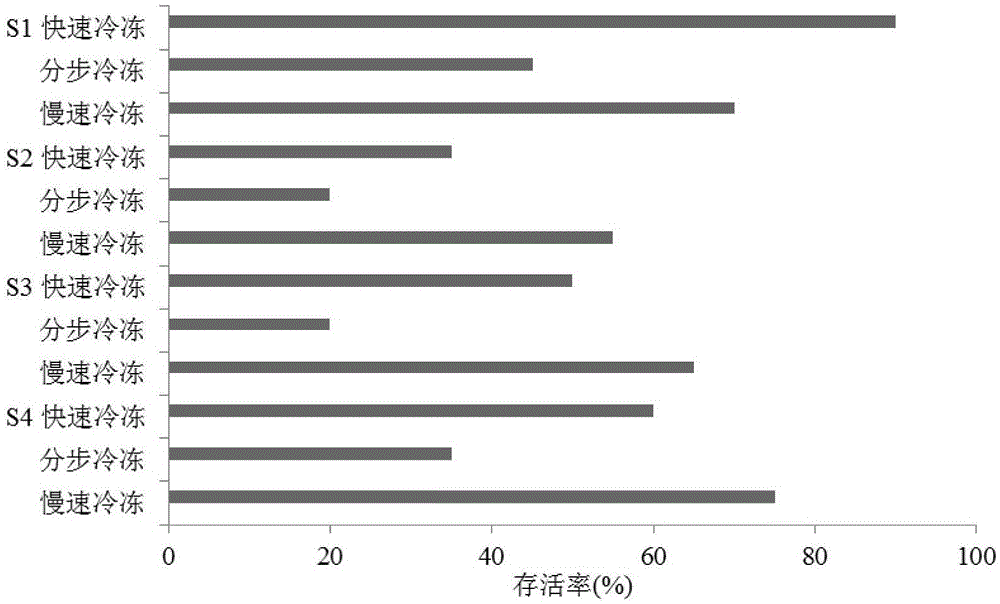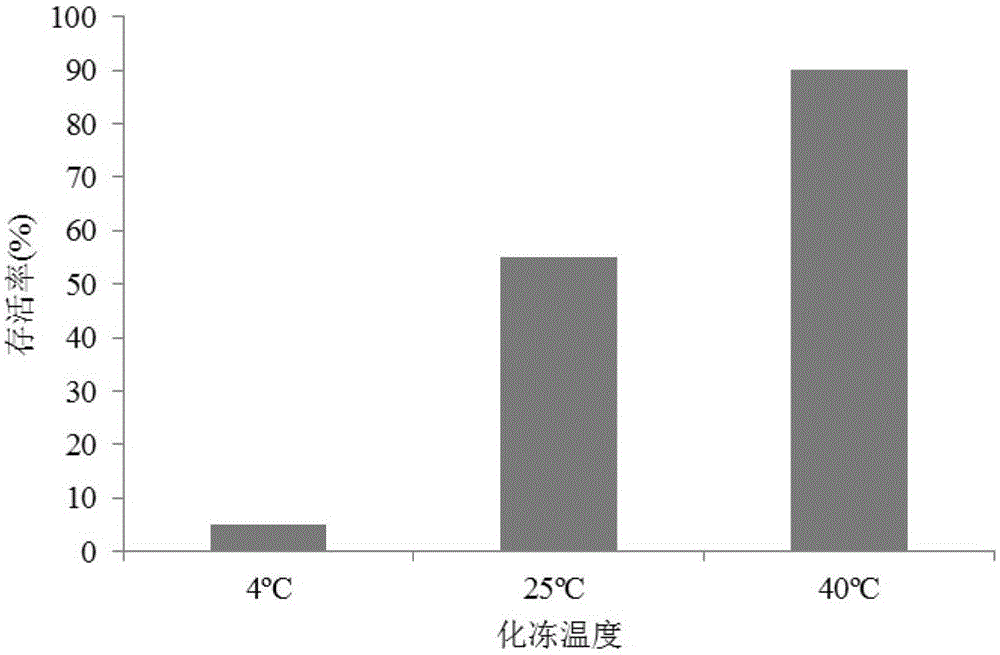Vitrification cryopreservation method for vitis amurensis callus tissues
A vitrification ultra-low temperature and ultra-low temperature preservation technology, which is applied in horticultural methods, botanical equipment and methods, horticulture and other directions, can solve the problems of difficult rooting of cutting propagation, low propagation coefficient of layering propagation, and limitation of grafting propagation, etc., so as to avoid the loss of germplasm. Or destroy, avoid genetic variation or pollution, reduce the effect of labor intensity
- Summary
- Abstract
- Description
- Claims
- Application Information
AI Technical Summary
Problems solved by technology
Method used
Image
Examples
Embodiment 1
[0042] Embodiment 1 Vitis vine callus vitrification cryopreservation technology
[0043] Experimental materials: from the National Germplasm Resource Garden of Vitis vinifera, the germplasm number is '75122'.
[0044] The specific steps of the experimental method are as follows:
[0045] 1. Material acquisition
[0046] Inoculate vine grape stems with 2 mg L of BA (6-benzylaminoadenine) in MS medium -1 , NAA (naphthalene acetic acid) 0.1mg L -1 , sucrose 30g·L -1 , agar 7g·L -1 medium, the temperature is 25±2°C, the light intensity is 1200Lux~1600Lux, and the callus is induced under the condition of 16h of light every day;
[0047] 2. Callus Dehydration
[0048] Cut the callus into small pieces of 0.2*0.2cm and put them in the ultra-clean workbench for 30 minutes to blow dry the callus properly to dehydrate the callus, which can prevent the formation of ice crystals in the tissue during ultra-low temperature storage.
[0049] 3. Loading with loading solution and cryopre...
Embodiment 2
[0057] The effect of embodiment 2 drying time on the viability of mountain grape callus
[0058] Only the drying time of the callus in the ultra-clean workbench was changed, and the rest of the steps were the same as in Example 1, to study the effect of the drying time on the survival rate of the callus of Vitis vinifera in cryopreservation. The result is as figure 1 shown.
[0059] From figure 1 It can be seen that after the fresh mountain grape callus is frozen, the survival rate is 5%; as the drying time prolongs, the callus survival rate increases. When the drying time is 40min and the water content of the callus is 40.7%. , the highest survival rate was 90%. However, if the drying time is too long, the callus will lose water seriously, and the survival rate of the callus will decrease.
Embodiment 3
[0060] The impact of embodiment 3 loading liquid on the viability of grape callus
[0061] Only change the composition of the loading solution, and the rest of the steps are the same as in Example 1, to study the impact of the loading solution on the cryopreservation survival rate of the grape callus, wherein S1 is ultrapure water with 10% dimethyl sulfoxide (DMSO)+10% B Diol + 8% glucose, S2 is ultrapure water plus 12.5% DMSO + 0.25% hydrolyzed casein, S3 is ultrapure water plus 10% DMSO + 10% sorbitol, S4 is PVS2. The result is as figure 2 As shown, when the S1 loading solution was used to load the vine callus and it was quickly frozen, the vine callus survival rate was the highest, reaching 90%, followed by the S4 loading solution for slow freezing, and the vine callus The survival rate was 75%. When using S2 and S3 loading solution and carrying out step freezing, the survival rate of grape callus was the lowest, both were 20%.
PUM
 Login to View More
Login to View More Abstract
Description
Claims
Application Information
 Login to View More
Login to View More - R&D
- Intellectual Property
- Life Sciences
- Materials
- Tech Scout
- Unparalleled Data Quality
- Higher Quality Content
- 60% Fewer Hallucinations
Browse by: Latest US Patents, China's latest patents, Technical Efficacy Thesaurus, Application Domain, Technology Topic, Popular Technical Reports.
© 2025 PatSnap. All rights reserved.Legal|Privacy policy|Modern Slavery Act Transparency Statement|Sitemap|About US| Contact US: help@patsnap.com



